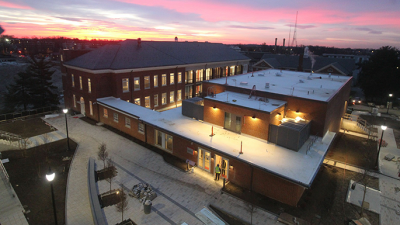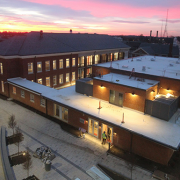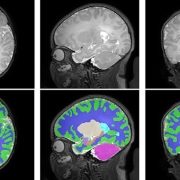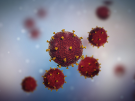Research campus joins Global Network of Innovation Districts

At the RIC’s 12-acre campus in Northwest Washington, D.C., experts from Children’s National work alongside public and private partners in industry, universities, federal agencies, start-up companies and academic medical centers to find solutions to some of science’s most vexing challenges.
The Children’s National Research & Innovation Campus (RIC) has become the first science ecosystem dedicated to pediatric health to join a network of over three dozen innovation districts worldwide that integrate research space with sustainable communities to create models for urban work and living.
Known as the Global Network of Innovation Districts (GNID), the community was conceived to unlock the design of campuses like the RIC to create collaborations among highly trained professionals. At the RIC’s 12-acre campus in Northwest Washington, D.C., experts from Children’s National work alongside public and private partners in industry, universities, federal agencies, start-up companies and academic medical centers to find solutions to some of science’s most vexing challenges. The campus is surrounded by mass transit, open spaces, retail and housing, and it’s built on deep historic roots in the city as the former home of the Walter Reed Army Medical Center.
Kerstin Hildebrandt, vice president of research administration at the Children’s National Research Institute, said the team at the Research & Innovation Campus is excited to maximize its potential by joining this global network of economic drivers that are enhancing their communities and cities.
“We look forward to sharing our best practices, and we want to learn about how our national and international colleagues are tackling complex issues,” she said. “For example, we can learn how others are leveraging their assets to improve their communities and their response to health crises, climate change and other significant challenges.”
The GNID was launched in March of last year by The Global Institute on Innovation Districts (GIID), an international nonprofit focused on the advancement of innovation districts. With an initial group of 23 districts. GIID is now expanding the network to include approximately 20 additional districts that extend across Europe, North America, Latin America, Australia and Asia.
GIID’s Founder Julie Wagner said innovation districts have become a worldwide phenomenon. She said their leaders are recognizing that working and collaborating with their peers — from Melbourne to Medellin — is a powerful strategy to help these complex geographies leverage their assets in new ways.
“We are finding that innovation districts are willing to execute impactful strategies after holding highly curated exchanges with their peers,” Wagner said. “These are the places armed to solve some of the world’s most vexing challenges. From where I sit, we all need to give them as many tools as possible to help them get there.”











